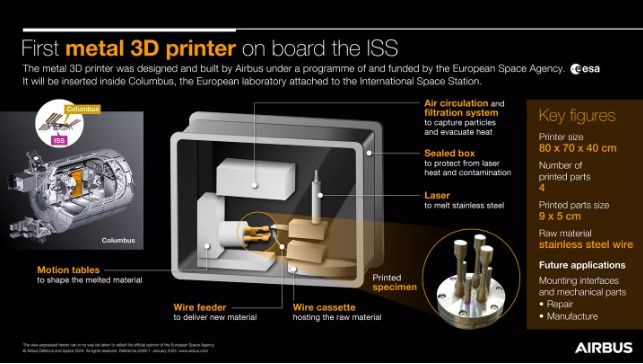The Space Domain in 2024: Emerging Risks and Burgeoning Opportunities
.jpg/fit-in/1200x9999/filters:no_upscale())
Space is going from strength to strength as a domain of both commercial and military importance in 2024. In the UK alone, the market reached £17.5 billion in value in 2020/21 (latest report). Following on from some major milestones in 2023, the industry heralds the continued fall in launch costs, greater accessibility, and an increased footprint for British innovators amid efforts to set up more launch sites. Meanwhile, orbital competition is very much alive with the US and China as the primary adversaries, whilst Elon Musk’s gargantuan SpaceX constellation, Starlink, is a major aid to Ukraine, where access proves to be a strategic advantage against Russia. Considering this context, we look at some of the hottest topics in the Space domain in 2024.

Deepening cooperation: public, private and international
Increasing cooperation in space helps pool resources, build trust, and extend good practice to the final frontier. Examples of moves to advance this internationally include Greece becoming the 35th signatory to the US’ Artemis Accords, the UK and Japan agreeing terms on a space cooperation agreement, the UK rejoining Copernicus (boosting EU-UK relations), Ghana and Tunisia signing a space cooperation agreement, and many more.
 Image source: UK Ministry of Defence
Image source: UK Ministry of Defence
In a mix of public-private partnerships (PPPs), UK authorities have sought to bring about a range of new commercial space ports, as Shetland’s SaxaVord was selected as the country's first vertical launch site. Across the Atlantic, NASA’s collaborations with industry have become part and parcel of the organisation’s operating model, with Axiom Mission 3 acting as a prime example. The mission is bolstered by SpaceX and Axiom Space, and will see cargo, experiments, and hardware return to Earth from the International Space Station (ISS).

Skills gap: competition and need for non-traditional space skills
In 2023, the UK Space Agency revealed that 52% of space companies flagged skills gaps in their current workforces, with Space-Comm Expo attendees reporting skills shortages as the biggest challenge to their businesses. Amongst those with a gap in their current workforce skillset, 72% said they had a gap in software and data skills.
.png)
The skills gaps were more chronic for larger companies, but still significant industry wide. Whilst many of the skills needed are traditionally technical and involve a STEM element, there is growing appetite for more commercial roles, such as lawyers, marketers and operations managers, as the sector matures.
Power in space
In late 2023, Rolls Royce unveiled a model lunar nuclear micro-reactor, to help conceptualise what reliable moon base power might look like. Nuclear power in space could provide ‘continuous and efficient’ propulsion and help maintain expanding lunar operations. NASA is also moving forward nuclear-powered space plans as part of its Artemis missions, designed to create a long-term human prescence on the Moon.
 Image source: Rolls Royce
Image source: Rolls Royce
Traditional space-based solar power, such as that which powers many satellites including the International Space Station (ISS), could come to power on-Earth grids from space. A NASA report suggested that the power would be carbon-efficient and low-cost, but only available after 2050. The ability to beam solar power back down to Earth could reduce the need for ground-based solar infrastructure and potentially yield eight times as much power.
Cyber and Electronic Warfare
Much has been made of the emergence of airborne Electronic Warfare (EW) systems in recent years, with the intersection of cyber and EW threats posing a significant risk to orbital assets also. Our reliance on satellites makes them an ideal target for those wishing to disrupt defences, communications, and entire economies, with the space economy being worth over $600 billion globally. Innovations targeted at securing the space domain from EW and cyber threats are in significant demand.
 Image source: UK MOD/ DE&S
Image source: UK MOD/ DE&S
After a major attack in 2022, where Russian-actors infiltrated a satellite’s communications protocols, many thousands across Europe lost internet access, with one German company losing access to almost 6,000 wind turbines. Such examples prove that ‘we need immediate, fortified satellite cybersecurity—not as a distant aspiration but as an urgent imperative right now’, according to the Scientific American. EW capabilities, which (similarly to cyber) focus on denial, jamming, interception and disruption, are a parallel threat, and developing resilience to these threats is an increasingly important priority.
Sustaining orbital operations
Our atmosphere is home to a crowded set of satellite constellations, some of which are old and at risk of obsolescence, which is why some are seeking to develop new circularity initiatives. One such drive involves satellites equipped with the tools to upgrade or repairs other satellites.
 Image source: Airbus
Image source: Airbus
Others are considering how 3D printing (additive manufacturing) in Space will help utilise space dust or rock as a raw material that can be used for structures and tools in future missions. The European Space Agency and NASA are among those trying to develop such capabilities. At the end of January 2024, Airbus’ metal 3D printer set off for the ISS, designed to make produce more load-bearing replacement parts than the station’s existing plastic 3D printers.
Want to hear, read and see more about the hottest topics for the space industry in 2024? Check out Space-Comm Expo's action packed programme, featuring a vast array of expert speakers.

